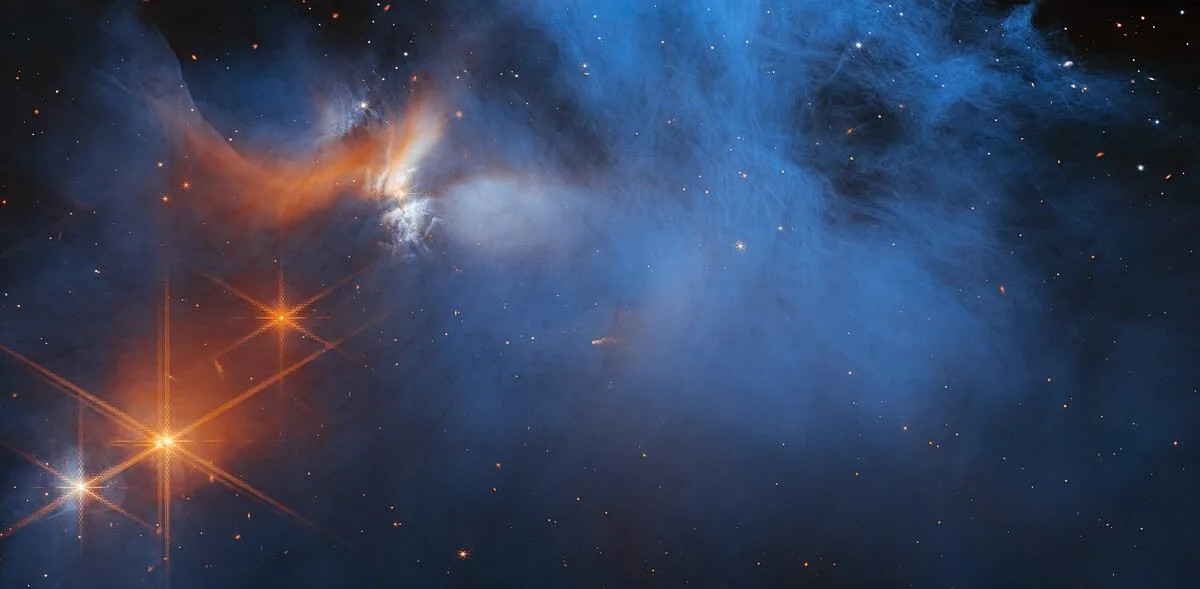Chamaeleon I Molecular Cloud
Image Credit & Copyright: Amiel Contuliano
No one has had anything to say about today's APOD, eh?
Well, it's a nice picture of a very young region of low-mass star formation. Actually I shy away a little from the expression "low-mass star formation", because any site of star formation that forms A-type stars deserves to be called, if you ask me, at least a medium-mass region of star formation. Honestly, do you realize how extremely common the little red dwarfs are and how respectably "medium-massive" the Sun is by comparison?
I apologize for the tiny size of the picture above, which makes it impossible to read the lettering. But the picture does bring home an important message: The little red dwarfs are just so numerous, and the Sun is actually pretty bright and massive compared with most stars in the Milky Way.
(And if you are wondering about the grayish-colored stars in the graph, I think these represent stars of a certain temperature and luminosity that, however, can't be found in the solar neighborhood.)
So, the Chameleon I molecular cloud. We have every reason to believe that the stars that are seen in reflection nebulas in this part of the sky are very young indeed, and that the clouds of gas and dust that they light up are indeed these stars' own birth cocoons.

The star that lights up the blue reflection nebula in the APOD is CU Chameleon, and it is, for its spectral class of A0V, shockingly faint!

With a a Gaia parallax that puts it only 600 light-years away from us, and with an apparent V luminosity of +9.0, its true V luminosity is only twice that of the Sun!


Compare CU Chameleon with our bright A1V-type neighbor Sirius, whose V luminosity is 22 times that of the Sun!!






















Why is CU Chameleon so faint for its spectral class? One reason is that it has lost so much of its light to its own reflection nebula! But the most important reason for its faintness is that it is so young.
Main sequence stars, those that fuse hydrogen to helium in their cores, get brighter and brighter as they age. If you ask me, the math idiot, the reason for this continuous brightening is that larger and larger parts of the star's interior get involved in the fusion of hydrogen into helium as the star ages. Sirius, according to Wikipedia, is 242±5 million years old (and don't ask me how they arrived at such an exact age). CU Chameleon, by contrast, is (I'm guessing) hardly more than 5 million years old, and it could well be younger.
One absolutely great aspect of today's APOD is that the colors are perfect. They are!

For example, it is very easy to identify CU Chameleon in the APOD, because it is the only blue star in the image. The fascinating C-shaped nebula is white to yellow-white, and my guess is that it is lit up by a yellow-orange K-type star. And the little arrowhead-shaped nebula below CU Chameleon is strikingly orange, probably because a tiny and very orange little red dwarf is forming there.
A picture where the colors are not so perfect, because the image has a bluish cast, is nevertheless a gorgeous portrait of the Chameleon I Molecular Cloud:
Lovely, isn't it? I think the details are gorgeous, and I really get the impression that a lot of (mostly small) stars are forming here. And no, the orientation of Stas Volskiy's picture is not the same as the APOD.
A larger-field image of the Chameleon I Molecular Cloud shows us the starforming site IC 2631 not far from CU Chameleon and Cederblad 111:
IC 2631. A lot of small stars are forming in the dark cloud
"above" bright blue star HD 97300. Credit: Mark Hanson.
And, yeah. HD 97300, illuminating star of IC 2361, is spectral class B9V, so it's a tad hotter than CU Chameleon. But this wet-behind-its-ears youngster is about as faint for its spectral class a CU Chameleon: Only 3 solar luminosities!



Ann
 Chamaeleon I Molecular Cloud
Chamaeleon I Molecular Cloud





